
Volumio Music Streamer
Nice elegant software for a Raspberry Pi-based music streamer, easily installed and with a terrific interface and robust performance, but let down by its approach to using tags and browsing options.
I recently had a play with the Volumio music streamer. First, I ought to be clear that I am a long-time user of the Logitech Media Server audio streaming system (LMS) which, despite the Squeezebox players being discontinued by Logitech back in around 2013, is still being maintained. Because I’m most used to how LMS works, I use this as the base for my comparisons.
My current LMS setup consists of the following elements:
1. LMS server. This is running on a Raspberry Pi model 3B, connected via ethernet cable to my router. The Raspberry Pi consumes only a little power and is left running 24/7.
2. A QNAP NAS which holds my music library (currently a little over 30,000 files comprising mostly flac and mp3 format), also connected via ethernet to the router.
3. Two Squeezebox Radios (kitchen and bedroom) and a Squeezebox Touch (connected via a Cambridge Audio DAC to my HiFi), all streaming music from the LMS server. The Squeezebox Radios are perfect for use as a bedside radio, having a normal radio style form factor. Plus LMS allows you to set alarms.
4. I also use a few phone and tablet apps (both iOS and Android) which permit control of the music system and playback).
5. I have several Raspberry Pi based players, some with attached DACs.
All the Raspberry Pi players/servers are running on piCorePlayer, a tiny Linux distro that focusses on supporting LMS.
LMS is a highly sophisticated music library system, partly because of its plugin system that offers a huge amount of configuration. LMS is controlled via its web interface - it’s functional, but a bit dated in appearance. However, the Material skin makes the interface a bit more attractive (even if monochrome), and is available as a plugin.

LMS scans the library of music files, and generates a database from the file tags. As it turns out, the way LMS uses tags is rather different to Volumio. In fact I suspect that the audio experience is pretty much the same when comparing LMS with Volumio, and really this review compares the two software packages.
Some years ago, I tried Volumio version 1.5, and was pretty underwhelmed with it (I also tried RuneAudio, which I believe forked from Volumio). This was because I was rather unimpressed by its feature set, and by the fact it didn’t seem to use file tags when organising my music collection (equally, it’s possible I cocked up the setup and scan).
This time round, I tried two installs of Volumio, first on a Raspberry Pi v2 and then on a Raspberry Pi Zero W. I connected the Volumio units to my HiFi through a Cambridge Audio DacMagic 100. The amplifier is an ageing Naim Nait3 integrated amplifier, driving an equally ageing pair of Mission 720 floorstanding speakers.
I didn't do blind audio comparisons between different devices: as long as the sound quality is good enough, that's enough for me. And if my devices send the same bits from the same file to the same DAC, I can't see why there would be a significant difference in sound quality. My main interests in this review are in the installation and use of the software.
Installation
Raspberry Pi Version 2
Volumio is a small Linux installation that, as many other Raspberry Pi distros do, uses the Music Player Daemon to play music. Downloads for a variety of hardware are here. I first installed Volumio version 2.692 on a Raspberry Pi version 2, so this is a pretty low powered device. I connected the Pi via USB to a Cambridge Audio DacMagic 100. For WiFi, I used an Edimax USB WiFi stick. All setup was via the Volumio web interface.
Installation was pretty trivial - I unzipped the image to an SD card, stuck it in the Pi, connected the ethernet cable and powered up.
On opening the Volumio web interface, I was efficiently guided through the set up of the device. I’d say the only hassle was connecting the NAS where my music collection is stored, and that’s usually a bit of a trial and error process of getting the path to the music files correctly entered.
Scanning 30,000+ music files took a while, probably because of the old hardware I was running Volumio on. In fact I left this overnight (it was pretty much impossible to do that scan via WiFi).
Once that was complete, I selected the output, added a couple of plugins (Spotify and Last.fm), inserted the WiFi stick, entered my WiFi details and shutdown the Pi. After disconnecting the ethernet cable, I connected the Pi to the DAC and powered it up.
The whole set up process is very quick, except for the file scanning. If you were only using a streaming service such as Spotify, you'd be up and running in minutes.
Raspberry Pi Zero W
I also tried installing Volumio on a Raspberry Pi Zero W. These little cards lack an ethernet port and have two microUSB ports (one is a power input), and a mini HDMI port. So, how does one get the device started? Well, it turns out to be silly easy.
I inserted a freshly burned microSD card, connected the Pi via USB to my DAC, and powered it up. It sets up a WiFi hotspot called Volumio. You just pair your laptop to that (using a password you can glean from the Volumio website), and you’re in and can complete setup. I held fire on scanning my music collection until I’d installed and configured the Spotify and Last.fm plugins, and the WiFi details (whereupon the Pi reboots and appears in the main network.
I set the Pi scanning my music collection - this was clearly going to take some time over a WiFi connection, so I left it to do its stuff…and actually it made quite good progress.
I'm running this Volumio install via WiFi. I've played mp3 and flac files, plus streamed via Spotify. All playback has been uneventful, no awkward stuttering or buffering. Indeed, it's a neat little player that, all issues of versatility aside, is fun to use. Over several days' use, Volumio was rock-solid on either the Pi 2 or the Pi Zero W.
The Raspberry Pi Zero W has built-in Bluetooth, but I don't think Volumio currently offers Bluetooth playback.
Web interface
You’re presented with a really very attractive web interface with which to control the Volumio. I’ve seen reviews which complain about the layout and usability, but I found it really quite easy and a bit refreshing after the ‘do anything’ customisability of LMS.

An image of the album/track being played is flanked by a circular progress indicator on the left and a volume control on the right. All the UI elements are in a nice minty green colour. Three buttons along the bottom of the screen allow you to move between Browse, Playback and Queue views.
For tablet use, it's convenient to save the web page to the tablet home screen as a shortcut. For phones, there's an app, or you can save the page to the home screen. The web interface adapts itself really effectively to the smaller phone screens.
Personally, I think this slick user interface is one of the real strengths of Volumio. I therefore found it a little surprising that there's a replacement UI in the works, available in this version as an option. I tried that out (at this point I must note that in a rare misfire for Volumio, some option selection boxes didn't always work - this may be a browser-related issue). So, what does the new interface look like?

Well, there it is, and I don't personally see its attractions. The menu at the left is pretty much the same as the drop down settings menu, and the player controls at the bottom of the screen just add unnecessary clutter. Hopefully when (if) this gets introduced, they can keep the current UI as an option.
Plugins
I only tried two plugins, both were very easy to install.
The Spotify plugin was really easy to set up, you just need your Spotify account details. On the other hand, setting up the last.fm plugin to scrobble was a little more involved and required me to obtain a last.fm API key.
I notice among the plugins that there are plugins to install Squeezelite, the software player for LMS, and LMS itself. I didn't want to go down that rabbit hole at this stage, though I wonder whether it might address issues of tag usage. There's also a Roon endpoint plugin, but there was no point in setting that up as I don't use Roon.
Phone app
I downloaded the Volumio app (available for both Android and iOS). It costs a couple of quid, but that’s OK, its a way of supporting the project after all. It pretty much looks like the web interface, and on the iPad, I just used the web browser.
Good points
- The system is really quite easy to set up and to operate. The control interface is colourful in a nicely unobtrusive way (though some background options are a bit busy and therefore unsuitable, to my taste at least). I may be shallow, but an attractive and usable UI is a very important feature. You can use plain colours instead of background images.
- Setting up Spotify was easy.
- The system has fewer options to customise than LMS, making it very usable for the casual user.
- I was really impressed by how usable Volumio was, considering the hardware I tried (Raspberry Pi version 2 and, later on, a Raspberry Pi Zero W) and the fact it was acting as both server and player.
Bad points
- I was disappointed at the range of browse options available. These are easily tuned on LMS - I particularly missed browsing by Album Artist rather than Artist, and browsing by Random Album.
- When browsing by Album, the albums don't appear to sort alphabetically by title, but alphabetically by Artist, which seems a bit odd to me.
- Volumio doesn’t appear to recognise/use the Compilation tag, and instead uses ‘Various’ (or similar wording - this can be specified in Settings) in the AlbumArtist tag to identify compilations. My collection is set up using the Compilation tag, and I’m not about to set forth editing a large number of files, probably around 460 compilations at a rough esitmate!
- LMS includes the option to exclude leading articles (The, El, La, Los, Las, Le, Les) from Artist, Song and Album names. This is pretty important where you’ve lots of artists beginning with “The”! This doesn’t seem possible with Volumio.
- The system has fewer options to customise than LMS, making it rather less versatile, and I couldn’t configure it as I’d like, and as I’m used to with LMS.
Overall
Volumio offers an easy to set up and use music streamer using several low cost computer boards now available and typified by the Raspberry Pi in its many forms. I think it’s best suited to smaller music collections, and because its approach to collecting and using tags is somewhat limited, you do need to pay attention to how your files are tagged. From my perspective there are two flaws.
First it doesn’t offer a distinction between the Artist (i.e. the track artist) and the AlbumArtist (i.e. the overall artist for the album). For me, being able to choose between browsing through Album Artists rather than just Artists is vital.
Secondly, Volumio doesn’t use the Compilation tag, which I’ve used to denote whether an album is a compilation or not. Instead, it uses words such as ‘Various Artists’, ‘Various’ when placed as AlbumArtist tags to identify compilations. In my collection, I have around 460 compilation CDs, often from magazines or other samplers. These generally have around 15 tracks all by different artists, many of whom are represented only once in my library. You can quickly see the problem in browsing by Artist where the number of Artists is amplified by perhaps 6900 entries. LMS reports 1129 Album Artists, 2995 Albums and 31971 Tracks. Compare that to Volumio: 6035 Artists and 7479 Albums - typically, a magazine-derived compilation will be listed 15 times, once for each artist on the compilation. The only way to deal with this is not to browse, but to search.
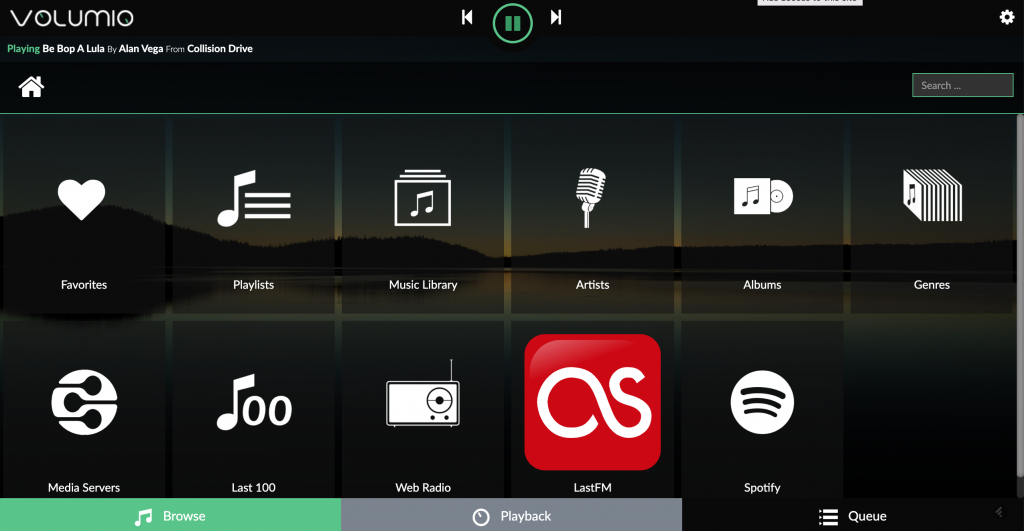
I have come across forum postings where the Volumio authors defend the simplified approach to using file tags on the grounds of simplicity for the user. I think this is a valid case, but I'd imagine that clarity on how to tag files at an early stage would be helpful - I certainly don't plan to re-tag the files for 460 compilation albums, all of which work fine with LMS.
I guess a comparison between Logitech Media Server and Volumio isn’t really a fair one - the two are really aimed at different markets, with LMS offering far greater functionality with its associated complexity. The elephant in the room is that while Volumio is very actively maintained and is moving onwards from software to hardware, LMS is (as far as I can tell) maintained by the heroic efforts of a single person at Logitech and a number of volunteers that develop individual pieces of software and plugins. That LMS is still a viable system 7 years on from the Squeezebox range being discontinued is testament to their efforts. There's a very active set of support forums for LMS, as indeed there are for Volumio. In the case of Volumio, the forums do have quite a lot of interaction with the development team.
It's interesting to compare the development trajectories of LMS and Volumio. The Squeezebox hardware and LMS software were picked up by Logitech from the original developers, then ultimately the hardware line was dropped, leaving software development still quite active. In contrast, Volumio seems to have begun as a software project aimed at the various tiny computer boards, and has now moved on to hardware development (for example the Volumio Primo) and a subscription model, MyVolumio. I haven't investigated MyVolumio, but it seems to offer plugins lossless streaming from Tidal and Qobuz and a number of other features.
Volumio looks to have a bright future, but for the time being I'm staying with Squeezebox/LMS.
Postscript
I notice on the Volumio blog an article that outlines the 'Experimental User Interface' and which indicates that several improvements are on the way, among which are:
Multiroom synced playback
Advanced Browsing Capabilities
Bluetooth integration
https://volumio.org/summer-ui-refresh-volumio/
The experimental UI is available in the version I tested, see screenshots earlier on. I wonder if the Advanced Browsing Capabilities will involve an expanded and better usage of tags...
When you subscribe to the blog, we will send you an e-mail when there are new updates on the site so you wouldn't miss them.
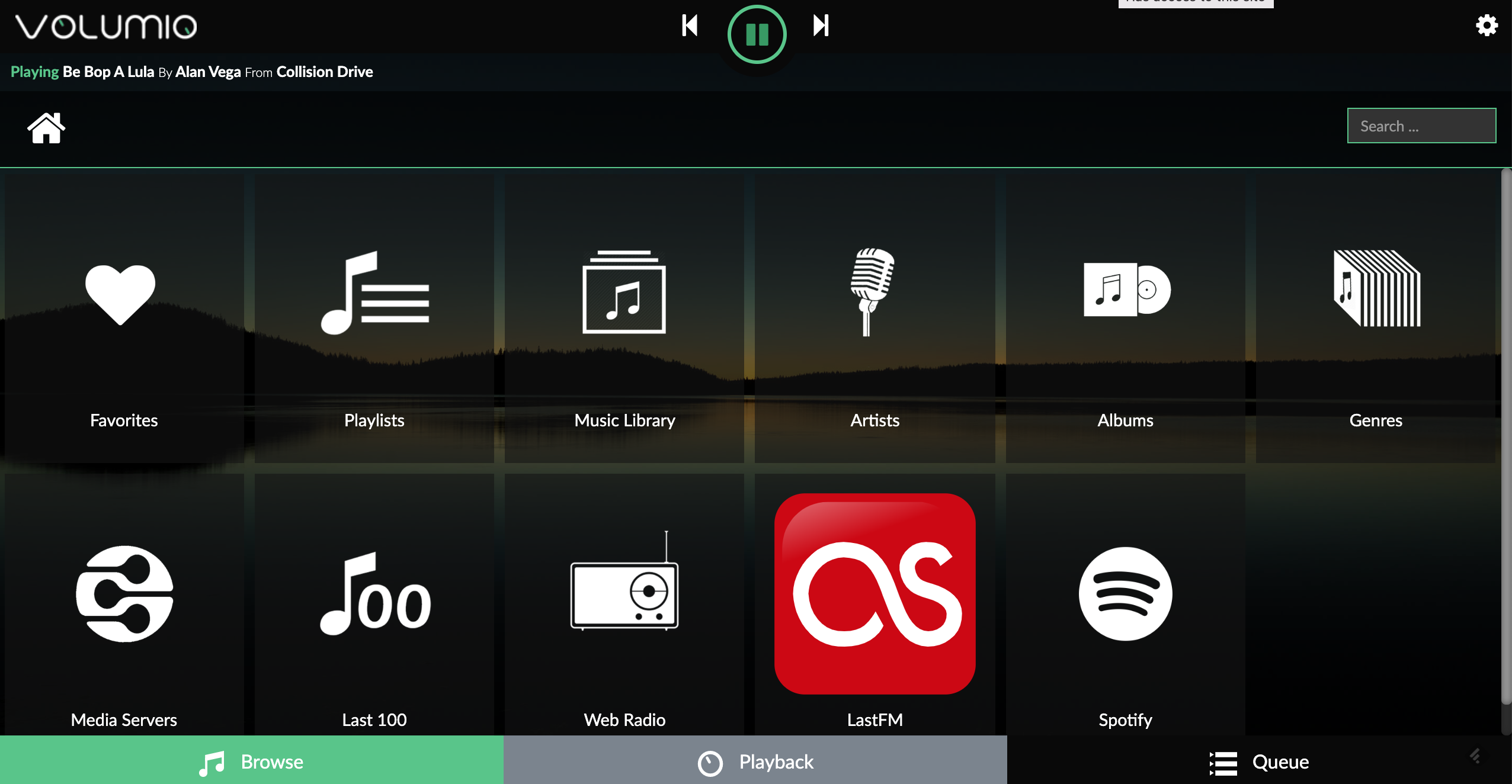
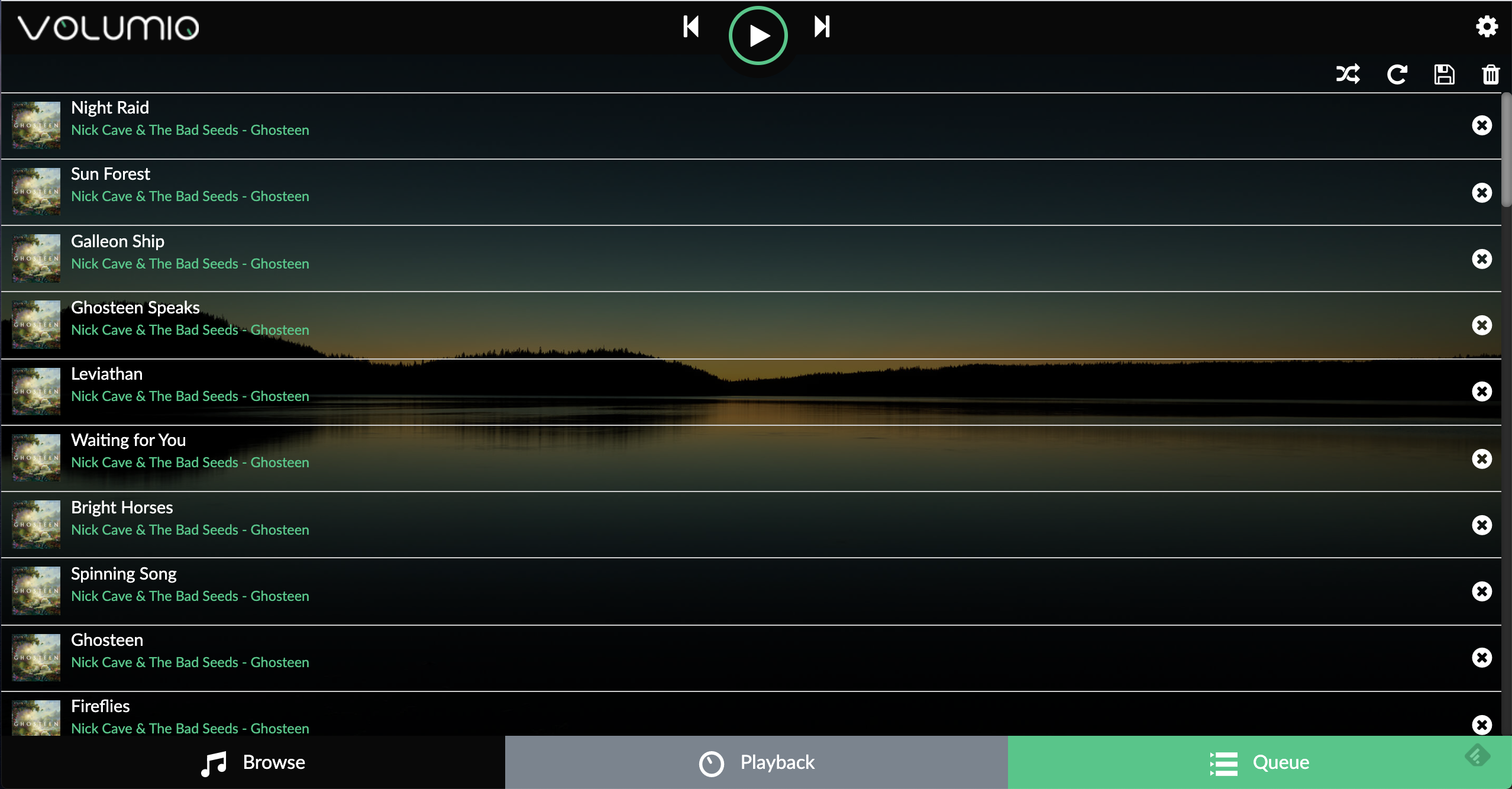
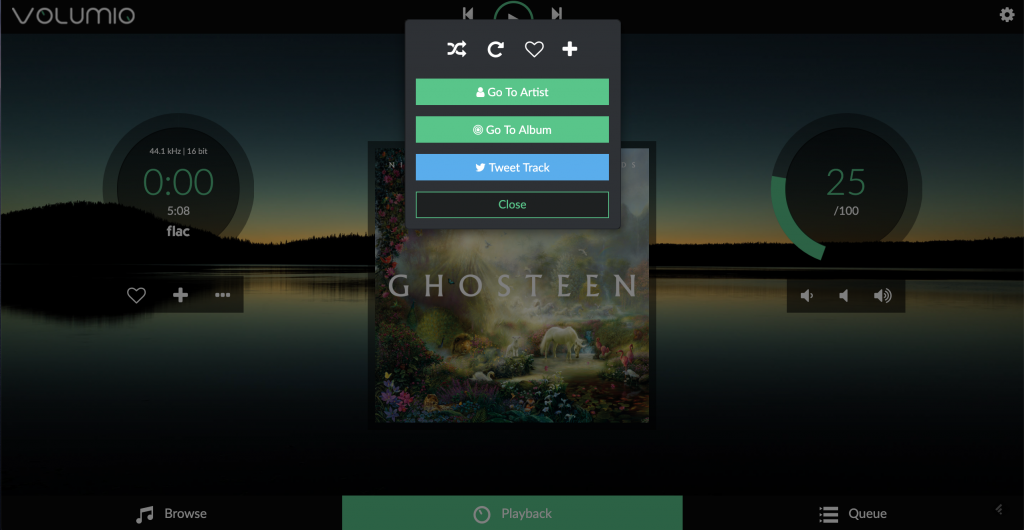
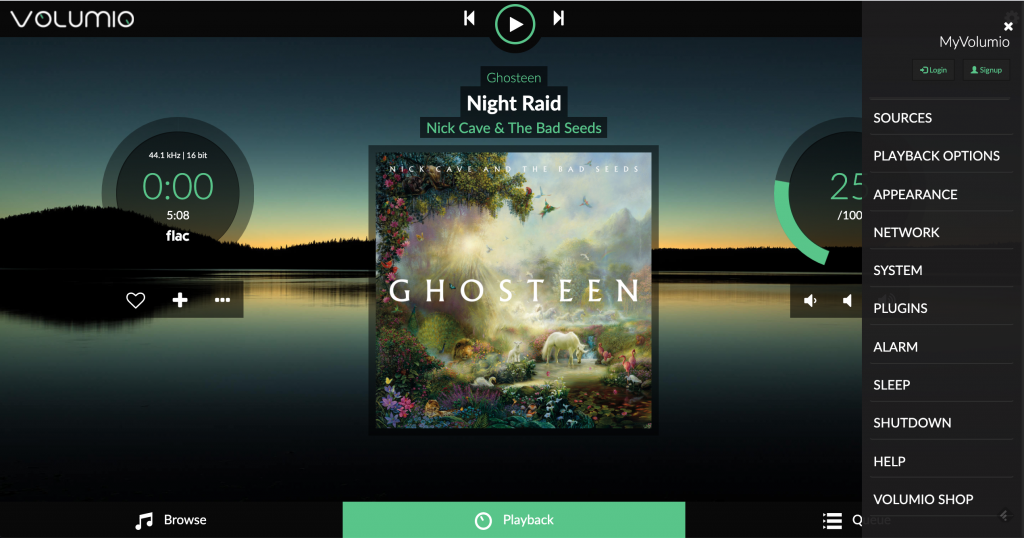
Comments